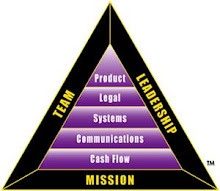by George Qualley IV
When it comes to business advertising and providing pre-purchase information to potential customers, the internet has proven to be a game-changing medium. Unlike the phone book, direct mail, trade shows, etc., a website provides every business, no matter how small, an opportunity to provide potential customers with a virtually unlimited source of information at minimal cost. Yet, despite this valuable resource, relatively few businesses effectively exploit the sales power of the internet.
With the proliferation of the internet, the number of businesses that have no web presence at all has drastically declined. Most businesses have recognized that, at the very least, a company website (even if rudimentary) is a business necessity. However, a prospective customer who researches a business using the internet is no different than the prospective customer who calls or visits a physical location of a business. Each prospect is looking for the appropriate information about the business that will enable them to make a decision regarding the purchase of a product or service. Although this might seem like a simple concept, a relatively small percentage of businesses seem to recognize this concept when it comes to designing a website.
Far too many websites look like they are an electronic version of some sales paraphernalia that might be passed out at a trade show or sent out as a direct mail piece. Generally speaking, the goal of a good flyer or mailer is to entice the prospective customer to make some further contact with a business so that the prospect can be sold by some additional means. In other words, the flyer is the device that hooks the prospect, not the device that closes the sale. Websites are far too often designed with the same goal as a flyer or direct mail piece—to entice the customer to take some further action, e.g. contacting a sales person in person or by phone. To say the least, this approach underutilizes the potential that the internet offers to a given business.
In case you hadn't noticed, the quality of websites on the internet has vastly increased from the early days of the World Wide Web. While some observers have termed this phenomenon as “Web 2.0”, the fact of the matter is that people are starting to realize that a website can provide something much more valuable and engaging than just text and pictures on a page.
You may have heard the phrase “content is key” to building a great website. However, “content” increasingly comes in the form of interactive features and functions rather than traditional means—just look at websites like Twitter, Facebook, and Digg. With websites like these, chances are that your prospective customers aren't going to be impressed if they’re looking for information and all your website is offering is a price list and a sales brochure.
If you're serious about turning your website into a tool to drive sales, accurate, instant, and personalized information is key. Just like a top salesperson, your website needs to deliver information to a prospective customer according to that customers particular wants and/or needs. Upgrading your website from a static, one-dimensional design to a dynamic, sales generating engine might sound like a significant challenge, especially if you don‘t have a dedicated IT department. However, third-party tools can provide a cost-effective and low-maintenance way to enhance your website. In many cases, just adding a few lines of code to your existing website can give you (and in turn, your customers) access to sophisticated applications without the hassle and expense associated with custom development. In addition, many web-based applications provide seamless upgrades and feature enhancements with no installation or maintenance on the part of the user. In short, if you're looking to integrate the type of dynamic functionality that will significantly increase the value of your website, look to industry specific web-applications that work with your site.
Although the internet has evolved significantly since it's inception, many businesses still haven't mastered the art of effectively exploiting the web as a successful sales tool. If you're not providing your prospective customers with the information that they want when they visit your website, you're simply not taking full advantage of one of the most effective marketing channels available today. More importantly, if you're missing that opportunity, it probably won't be long before your competitors take advantage of your oversight.
About the writer : George Qualley IV, J.D., M.B.A. is the co-creator of SiteOMite.com, a web-based tool which allows special event service providers (e.g. DJs, photographers, videographers, etc.) the ability to offer dynamic, online price and availability quotes to their customers. Copyright (c) 2009 - Siteomite.com
Source: site-references.com
Feed2PDF: Konversi RSS Feed Ke PDF
14 years ago

No comments:
Post a Comment